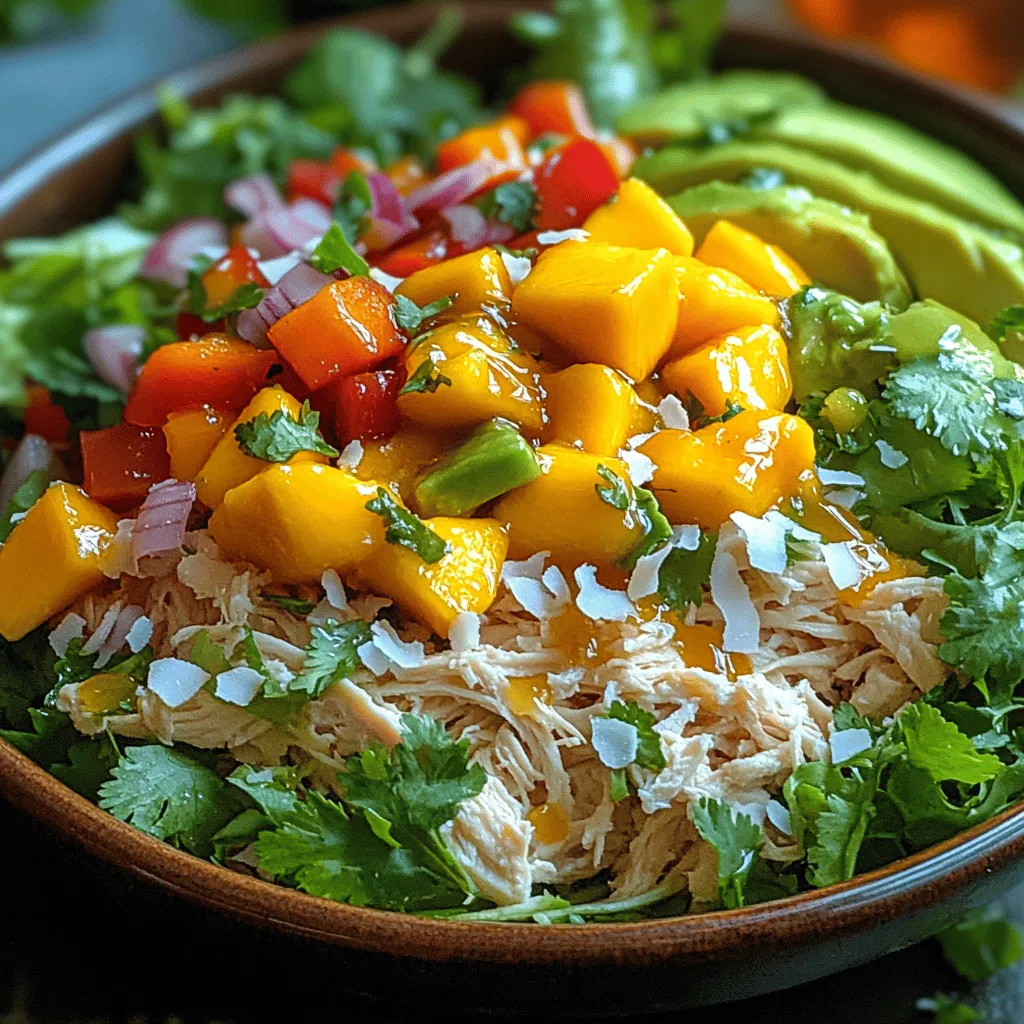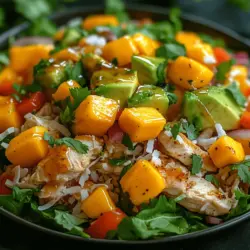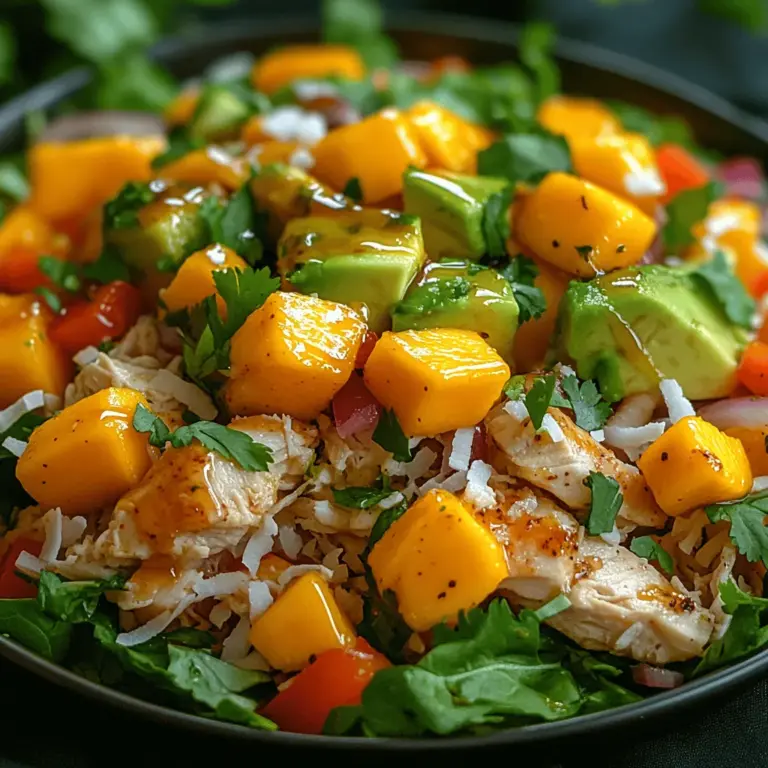Introduction
In the bustling world of home cooking, efficiency and flavor often take center stage. One-pan meals have surged in popularity among home chefs, and for good reason. They not only simplify the cooking process but also minimize cleanup, making them ideal for busy weeknights or leisurely weekends. Among the myriad of one-pan recipes out there, the Savory One-Pan Lemon Garlic Chicken with Vegetables stands out as a delightful option that marries the vibrant flavors of lemon and garlic with the freshness of seasonal vegetables.
This dish encapsulates a perfect harmony of bright citrus notes and aromatic garlic, creating a flavor profile that is both refreshing and satisfying. The zesty lemon juice enhances the natural sweetness of the chicken, while the garlic adds depth and a savory richness. When combined with colorful vegetables, this recipe not only becomes a feast for the taste buds but also a visual delight on your dinner table.
Understanding the Ingredients
Overview of the Main Ingredients
To create this delightful one-pan meal, we need a few key ingredients that work together to deliver an exceptional flavor experience. The primary components include chicken, fresh vegetables, lemon, garlic, olive oil, and a selection of herbs and spices. Understanding each ingredient’s role will help you appreciate the dish’s complexity and versatility.
Chicken: Types and Cuts Suitable for the Recipe
Chicken is the star of this dish, providing a lean source of protein that pairs beautifully with the other ingredients. For this recipe, boneless, skinless chicken breasts or thighs are recommended due to their tenderness and ability to absorb flavors. Chicken thighs are particularly favored for their rich flavor and juiciness, while breasts offer a leaner option. If you prefer, you can also use bone-in chicken pieces; however, cooking times may vary.
Fresh Vegetables: Seasonal Options for Versatility
One of the beauties of this one-pan chicken recipe is its adaptability to seasonal vegetables. You can customize the dish based on what’s available at your local market. Popular options include bell peppers, zucchini, carrots, and green beans. These vegetables not only add vibrant colors to the plate but also contribute essential nutrients and fiber, making the dish well-rounded and healthy.
Lemon: The Role of Acidity in Flavor Enhancement
Lemon is a crucial ingredient in this recipe, providing acidity that brightens the overall flavor profile. The juice not only enhances the chicken’s taste but also helps tenderize the meat, making it juicier and more flavorful. Freshly squeezed lemon juice is recommended for its vibrant flavor, but bottled lemon juice can also work in a pinch. Don’t forget to include lemon zest; it contains aromatic oils that add an extra layer of citrusy goodness.
Garlic: Health Benefits and Flavor Profile
Garlic is another star ingredient, known for its robust flavor and numerous health benefits. Whether you choose to use fresh garlic cloves or pre-minced garlic, this ingredient will infuse the dish with a savory aroma that is hard to resist. Garlic is rich in antioxidants and has been linked to various health benefits, including improved heart health and immune function. Its pungent flavor mellows out during cooking, leaving behind a rich, sweet undertone that complements the lemon and chicken beautifully.
Recommended Spices and Herbs
The right combination of spices and herbs can elevate your one-pan meal to new heights. For this recipe, a simple blend of salt, pepper, and dried Italian herbs (such as oregano and thyme) works wonders. These herbs enhance the dish’s flavor without overpowering the fresh ingredients. If you’re feeling adventurous, consider adding a pinch of red pepper flakes for a subtle kick.
Olive Oil: Health Benefits and Flavor
Olive oil is the ideal cooking fat for this recipe, as it not only adds flavor but also provides health benefits. Rich in monounsaturated fats, olive oil has been associated with heart health and can help reduce inflammation. When used to sauté the chicken and vegetables, it creates a golden, crispy exterior while keeping the meat tender and juicy.
Seasonings: Salt, Pepper, and Additional Herbs
To enhance the natural flavors of the chicken and vegetables, a good balance of salt and pepper is essential. Seasoning at different stages of cooking helps build layers of flavor. Additionally, you can sprinkle fresh herbs like parsley or basil just before serving for a fresh finish that brightens the dish.
Equipment Needed
Essential Kitchen Tools for Preparation
Before diving into the cooking process, it’s important to gather the necessary kitchen tools. Having the right equipment can streamline your cooking experience and ensure that your one-pan meal turns out perfectly.
Cutting Board and Knife
A sturdy cutting board and a sharp chef’s knife are essential for preparing your ingredients. These tools will help you chop the vegetables and slice the chicken with ease, ensuring that everything is uniform in size for even cooking.
Mixing Bowl
You’ll need a mixing bowl to marinate the chicken. This allows the chicken to soak up the flavors of the lemon, garlic, and herbs, enhancing its taste and tenderness.
One-Pan Options: Skillet vs. Baking Dish
For this recipe, you can use either a large skillet or a baking dish. A skillet is ideal for stovetop cooking and allows for easy stirring and flipping. On the other hand, a baking dish is perfect for roasting the chicken and vegetables in the oven, resulting in a beautifully caramelized finish. Choose the option that best suits your cooking method and familiarity.
Importance of Using the Right Cookware for Even Cooking
Regardless of your choice between skillet or baking dish, it’s crucial to use cookware that distributes heat evenly. This ensures that your chicken cooks through completely without drying out, and that your vegetables are perfectly tender. Non-stick pans are also a great choice, as they help prevent sticking and make cleanup a breeze.
Step-by-Step Recipe Instructions
Preparation of Ingredients
To start, gather all your ingredients and prep them for cooking. This includes slicing the chicken into uniform pieces (if using breasts) and chopping your chosen vegetables into bite-sized pieces. Having everything prepped and ready to go will make the cooking process smoother and more enjoyable.
Marinating the Chicken
In a mixing bowl, combine the chicken pieces with freshly squeezed lemon juice, minced garlic, olive oil, and your selected herbs and spices. Ensure that the chicken is well-coated with the marinade. Let it sit for at least 15-30 minutes to allow the flavors to meld. If time permits, marinating for a few hours or even overnight in the refrigerator will yield even better results.
Chopping Vegetables: Tips for Uniformity
When chopping vegetables, aim for uniform sizes to ensure they cook evenly. For example, if you’re using bell peppers and zucchini, slice them into similar thicknesses. This way, you won’t end up with some vegetables overcooked while others remain crunchy. Remember to wash your vegetables thoroughly before chopping.
Cooking Process: Detailed Steps
1. Heat the Pan: If using a skillet, heat it over medium heat and add a drizzle of olive oil. If using a baking dish, preheat your oven to 400°F (200°C).
2. Sear the Chicken: Once the oil is hot, add the marinated chicken to the skillet in a single layer. Sear for about 4-5 minutes on each side, or until it develops a golden crust. If using a baking dish, simply place the marinated chicken in the preheated oven.
3. Add the Vegetables: After the chicken is seared, add the chopped vegetables to the skillet, stirring to combine. If you’re using a baking dish, you can add the vegetables around the chicken to roast together.
4. Season and Stir: Sprinkle additional salt, pepper, and herbs over the chicken and vegetables. Stir everything together to ensure even seasoning.
5. Finish Cooking: Continue cooking for an additional 10-15 minutes, or until the chicken is cooked through and the vegetables are tender. If you’re using a baking dish, roast for about 25-30 minutes, or until the chicken reaches an internal temperature of 165°F (75°C).
With these initial steps, you’re well on your way to creating a delicious Savory One-Pan Lemon Garlic Chicken with Vegetables. The combination of zesty lemon, aromatic garlic, and fresh veggies promises a meal that is not only satisfying but also healthy. Stay tuned for the next part where we’ll delve into serving suggestions, storage tips, and frequently asked questions to enhance your culinary experience!

Searing the Chicken for Flavor
To create a flavorful base for your Tropical Bliss: Fresh Mango Coconut Chicken Salad, start by searing the chicken. This step is crucial as it locks in moisture and develops a golden-brown crust that enhances the overall taste of the dish. Begin by preheating your skillet over medium-high heat and adding a splash of olive oil—about two tablespoons should suffice. Once the oil is shimmering, carefully add the seasoned chicken breasts to the pan.
Sear the chicken for approximately 5-7 minutes on each side without moving it around too much. This allows for a beautiful browning effect, which not only looks appealing but also adds depth to the flavor. Ensure the internal temperature reaches 165°F (75°C) to confirm that the chicken is fully cooked. After searing, remove the chicken from the skillet and let it rest for a few minutes before slicing it into bite-sized pieces. Resting helps retain the juices, ensuring your chicken remains tender and succulent.
Adding Vegetables: Timing and Techniques
Vegetables are a vital component of this salad, providing both color and nutrition. Timing is essential to ensure that they maintain their crunch and freshness. Begin by chopping your chosen vegetables—bell peppers, cucumbers, and red onions work beautifully in this recipe.
Once the chicken is done resting, use the same skillet to sauté your vegetables. The residual heat and flavor left from the chicken will enhance the vegetable’s taste. Add the chopped vegetables to the skillet, sprinkling a pinch of salt and pepper over them. Sauté for about 3-4 minutes until the vegetables are just tender but still crisp. This technique preserves their vibrant colors and nutrients while allowing them to soak up the flavors from the chicken.
Incorporating Lemon and Garlic
To elevate the flavor profile of your Tropical Bliss salad, the addition of lemon and garlic is essential. After sautéing the vegetables, push them to the side of the skillet and add a minced garlic clove to the empty space. Sauté the garlic for about 30 seconds until fragrant, taking care not to burn it.
Next, squeeze the juice of one lemon directly into the skillet. The acidity from the lemon will brighten the dish and balance the richness of the chicken and coconut. Stir everything together, ensuring that the garlic and lemon juice are well incorporated with the chicken and vegetables. This step enhances the freshness of the salad and adds a zesty kick that pairs beautifully with the tropical flavors.
Finishing Touches: How to Know When It’s Done
The finishing touches are crucial for the perfect Tropical Bliss salad. Once you have mixed in the lemon and garlic, take a moment to assess your dish. The chicken should be golden and cooked through, the vegetables should be vibrant and slightly tender, and the garlic should be aromatic without being burnt. This is your cue to remove the skillet from the heat.
To assemble your salad, combine the warm chicken and vegetable mixture with chopped fresh mango and shredded coconut in a large bowl. Gently toss everything together to ensure even distribution without bruising the mango. The warmth from the chicken and vegetables will slightly soften the mango, creating a delightful contrast in textures.
Flavor Variations and Customization
One of the best aspects of the Tropical Bliss salad is its versatility, allowing for numerous flavor variations and customization options based on seasonal ingredients and personal preferences.
Ideas for Different Vegetables Based on Seasons: Depending on the season, you can easily switch up the vegetables in this salad. In spring, consider adding snap peas and radishes for a fresh crunch. During summer, zucchini and cherry tomatoes can add a juicy element. In fall, roasted butternut squash or sweet potatoes can bring a subtle sweetness, while winter might call for hearty greens like kale or Brussels sprouts.
Alternative Marinades and Seasoning Blends: While the original seasoning of salt, pepper, and a hint of lime is refreshing, you can experiment with various marinades. A honey-soy glaze can introduce an Asian flair, while a chipotle-lime marinade can add a smoky heat. You might also consider using a fresh herb blend like cilantro or basil to enhance the tropical vibes.
Suggestions for Protein Substitutions: If you want to modify the protein source, there are several options available. Tofu or tempeh can be excellent alternatives for a vegetarian version, absorbing the flavors beautifully. For seafood lovers, shrimp can be quickly sautéed and tossed in for a delicious twist. Pork tenderloin, seasoned similarly to the chicken, can also work well to provide a robust flavor.
Serving Suggestions
With the Tropical Bliss salad prepared, you might wonder how to serve it for the best experience. Here are some delightful serving suggestions that can elevate your meal.
Ideal Side Dishes to Complement the Meal: This salad pairs wonderfully with light side dishes. Consider serving it alongside a refreshing cucumber salad or a simple tomato and basil salad drizzled with balsamic vinegar.
Grain Options: Rice, Quinoa, or Couscous: For a heartier meal, serve the salad over a bed of grains. Fluffy jasmine rice complements the tropical flavors beautifully, while quinoa adds a nutty touch and boosts protein content. Couscous, with its delicate texture, can also provide a lovely base for your salad.
Salad Ideas for a Fresh Touch: If you’re looking to add even more greens, consider serving the Tropical Bliss salad over a bed of mixed greens. Baby spinach, arugula, or a crunchy romaine blend can enhance the freshness of the dish.
Presentation Tips for an Appealing Plate: Presentation plays a significant role in the enjoyment of food. To create an appealing plate, serve the salad in a large, colorful bowl or arrange it neatly on individual plates. Garnish with additional fresh herbs, a sprinkle of sesame seeds, or a slice of lime for added flair.
Nutritional Information
Understanding the nutritional benefits of the Tropical Bliss salad can make this dish even more appealing, especially for health-conscious consumers.
Overview of the Dish’s Health Benefits: The combination of lean protein, fresh vegetables, and healthy fats makes this salad not only delicious but also nutritious.
Protein Content from Chicken: Chicken breast is an excellent source of protein, essential for muscle repair and growth. A typical serving of chicken offers around 25-30 grams of protein, making this salad an ideal post-workout meal.
Vitamins and Minerals from Vegetables: The vegetables in this salad provide a wealth of vitamins and minerals. Bell peppers are high in vitamin C, which supports the immune system, while cucumbers add hydration and fiber. Onions not only enhance flavor but also contain antioxidants that promote heart health.
Healthy Fats from Olive Oil: The use of olive oil as a cooking fat contributes healthy monounsaturated fats, which can help lower bad cholesterol levels and reduce the risk of heart disease.
Storage and Reheating
If you find yourself with leftovers (though we doubt you will!), proper storage and reheating techniques are essential to maintain the quality of your Tropical Bliss salad.
Best Practices for Storing Leftovers: Store any leftover salad in an airtight container in the refrigerator. Ideally, consume the salad within two days to ensure freshness. If possible, store the components separately (chicken, vegetables, and dressing), as this will help prevent the salad from becoming soggy.
Tips for Reheating to Maintain Flavor and Texture: When it comes to reheating, the stovetop is your best bet. Gently warm the chicken and vegetables in a skillet over low heat until heated through. Avoid microwaving, as this can lead to rubbery chicken and mushy vegetables.
Conclusion
In summary, the Tropical Bliss: Fresh Mango Coconut Chicken Salad is a vibrant, refreshing dish that encapsulates the essence of summer with its tropical flavors and wholesome ingredients. Its simplicity and flavor make it an ideal choice for both weeknight dinners and special gatherings.
We encourage you to explore various variations, whether it’s swapping out ingredients based on seasonal availability or experimenting with different proteins and marinades. The joy of cooking lies in the ability to personalize your meals, and this salad is a perfect canvas for creativity.
Finally, don’t forget that sharing meals with loved ones enhances the experience. Gather your friends and family around the table to enjoy this delightful salad, as it not only nourishes the body but also fosters connections and creates lasting memories. Embrace the culinary journey, and let the Tropical Bliss salad be a staple in your recipe repertoire.


